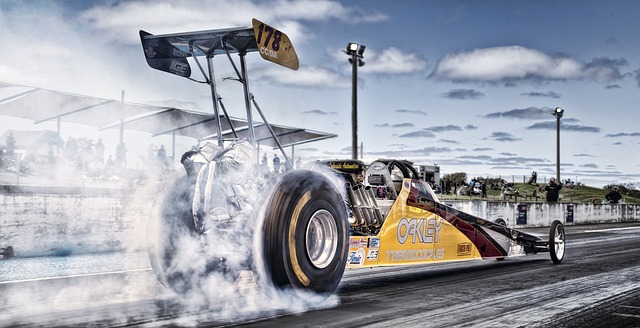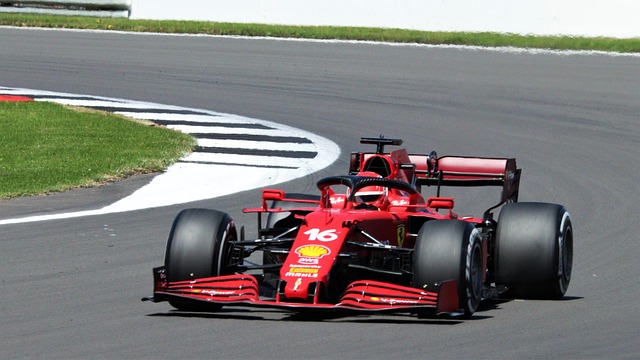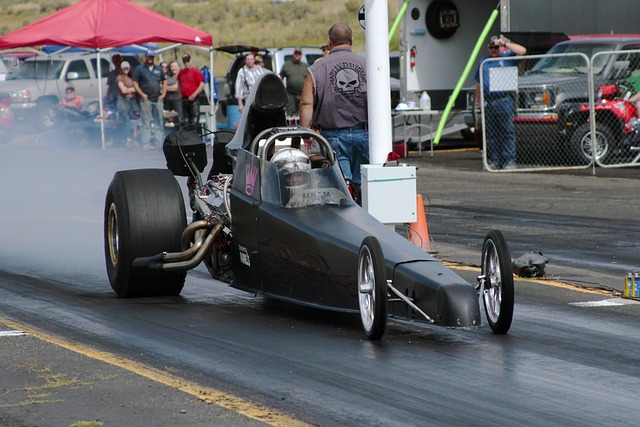Select Drag Racing highlights the extreme world of professional racing, where drivers and their high-performance vehicles push speed boundaries on specially designed tracks. Unlike everyday road usage, this sport demands advanced vehicle knowledge and modifications for optimal performance. While thrilling, aggressive driving styles like drag racing pose significant risks, including severe injuries and legal consequences. To engage safely, enthusiasts should prioritize organized events with proper safety measures and invest in safety equipment. By learning from drag racing professionals, we can promote responsible driving habits that value speed and safety on our roads.
“Aggressive driving styles, characterized by reckless and dangerous maneuvers, pose significant risks on our roads. This article delves into the multifaceted issue, offering a comprehensive guide. We explore ‘Understanding Aggressive Driving: The Basics’ to uncover its subtle signs. Additionally, we examine drag racing’s role as a catalyst for aggressive behavior and its legal implications. From ‘Risks and Dangers’ to safe alternatives, we provide insights. Join us in promoting a responsible driving culture by understanding these issues and their impact.”
- Understanding Aggressive Driving: The Basics
- What is Drag Racing and Its Relationship to Aggressive Driving?
- Risks and Dangers of Engaging in Aggressive Driving Styles
- Legal Implications and Penalties for High-Risk Driving Behaviors
- Safe Alternatives to Expressing Your Passion for Speed
- Promoting Responsible Driving Culture: A Call to Action
Understanding Aggressive Driving: The Basics

Aggressive driving styles often involve a combination of high-performance vehicles and drivers who prioritize speed and precision. At its core, aggressive driving encompasses techniques aimed at maximizing acceleration and handling on specially designed tracks or public roads during competitions or everyday commutes. One extreme manifestation of this is drag racing, where the goal is to achieve the fastest time in a straight line over a set distance, usually ¼ mile.
In the context of drag racing, specifically, drivers utilize various strategies such as optimized tire choices for drag strips to enhance grip and traction. These choices often include specialized tires designed for maximum acceleration and stability at high speeds. Unlike traditional road vehicles, select drag racing cars are meticulously engineered for straight-line performance, featuring powerful engines, advanced aerodynamics, and lightweight construction. This focus on speed and efficiency sets aggressive driving apart from regular road usage and positions it as a thrilling yet potentially dangerous sport, requiring skill, precision, and adherence to safety protocols.
What is Drag Racing and Its Relationship to Aggressive Driving?

Drag racing is a high-octane event that involves vehicles accelerating from a standstill to reach a specific speed or cross the finish line first. It’s a direct manifestation of aggressive driving, where drivers push their machines to the limits, showcasing raw power and speed. This thrilling sport has deep roots in automotive culture and has evolved over decades, attracting enthusiasts worldwide.
When compared to local street car drag races or time attack events, drag racing as a career is a serious pursuit for many. It requires an extensive understanding of vehicle dynamics, precision driving skills, and a knack for strategic modifications. Unlike the local meetups that focus on community and personal bests, professional drag racing involves meticulously engineered machines designed solely for speed, making it a unique and extreme form of automotive competition.
Risks and Dangers of Engaging in Aggressive Driving Styles

Engaging in aggressive driving styles, such as select drag racing, comes with significant risks and dangers that often go unnoticed. High-performance vehicles designed for drag racing, like top fuel dragsters, are built to achieve maximum speed in a straight line over short distances. This extreme optimization can lead to poor handling and reduced stability on regular roads, increasing the likelihood of accidents. The high speeds and aggressive maneuvers common in drag racing events raise the risk of severe injuries or even fatalities for both participants and bystanders, particularly during local street car drag races where safety measures may be inadequate.
Moreover, aggressive driving styles contribute to wear and tear on vehicle components, especially brakes, tires, and suspension systems. Regular exposure to high-stress conditions can lead to premature failure of these critical parts, posing further safety hazards. Auto shop specials for drag cars often focus on enhancing performance but may overlook essential maintenance and safety upgrades needed for everyday driving. As a result, drivers engaging in aggressive racing styles are not only putting themselves and others at risk but also compromising the long-term reliability and safety of their vehicles.
Legal Implications and Penalties for High-Risk Driving Behaviors

Engaging in high-risk driving behaviors, such as aggressive or reckless driving, can have severe legal consequences. These actions not only endanger the driver but also pose significant risks to other road users and pedestrians. When it comes to extreme forms of driving like select drag racing, the penalties are particularly stringent due to the potential for serious accidents and damage.
Participating in local street car drag races or organizing such events without proper permits can lead to fines, license suspension, or even imprisonment. Auto tuning for drag events, while enhancing performance, must adhere to road safety standards and regulations. The risks associated with drag racing are well-documented, and law enforcement agencies take a dim view of activities that could contribute to road accidents or cause property damage. Thus, it’s crucial for enthusiasts to understand these legal implications to ensure safe and responsible participation in any driving-related events.
Safe Alternatives to Expressing Your Passion for Speed

Expressing your passion for speed doesn’t always have to translate into aggressive driving styles. While many enthusiasts enjoy the thrill of high-performance vehicles, it’s essential to consider safer alternatives to quench that competitive spirit. One popular option is selecting drag racing as a way to test your car’s limits without endangering others on public roads. Local street car drag races provide an organized environment where drivers can compete head-to-head in a controlled setting.
Drag racing for charity events has also gained popularity, allowing enthusiasts to channel their passion into something meaningful. By participating or organizing such events, you can contribute to worthy causes while showcasing your driving skills. Additionally, investing in drag racing safety equipment is crucial. Proper protective gear ensures the well-being of both drivers and spectators, making these activities more accessible and enjoyable for all involved.
Promoting Responsible Driving Culture: A Call to Action

Promoting a culture of responsible driving is an urgent need in today’s fast-paced world, where aggressive behavior on the roads has become all too common. Aggressive driving styles, such as tailgating, rapid lane changes, and excessive speeding, not only endanger the driver but also other road users and pedestrians. These behaviors often stem from a sense of competition and a desire for speed, reminiscent of drag racing events where top fuel dragsters compete at breathtaking velocities.
To foster a safer driving environment, we must educate and encourage drivers to adopt more cautious habits. This involves learning from the expertise of best-in-class drag racing coaches who understand the nuances of both high-performance driving and road safety. By promoting select drag racing as a thrilling yet controlled activity, we can inspire drivers to appreciate speed and competition without endangering lives. It’s time to embrace responsible driving as a collective effort, ensuring that our roads become safer and more harmonious for everyone.
Aggressive driving styles, as exemplified by behaviors seen in drag racing, pose significant risks to both drivers and others on the road. While high-octane passion for speed is understandable, engaging in such practices can lead to severe accidents, legal consequences, and long-lasting damage. It’s crucial to understand that there are safer alternatives to express this enthusiasm, like participating in approved racing events or joining driving clubs that promote responsible and controlled speed experiences. Let’s collectively work towards fostering a culture of safe and respectful driving for everyone’s well-being.
